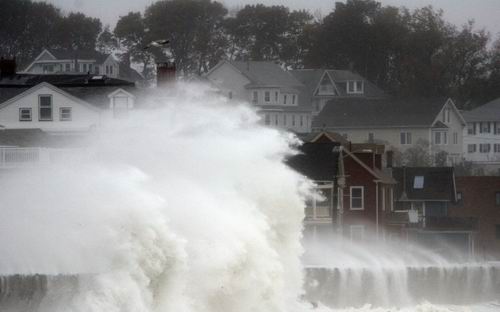
|
|

|
|
| May 2, 2024 |
|
Study: Man-made climate change was factor in 2012 extreme weather 
Man-made climate change may have contributed to half of the extreme weather events of 2012, scientists said in a new report in the Bulletin of the American Meteorological Society (AMS).
The report published by scientists with the National Oceanic and Atmospheric Administration (NOAA), is based on studies of about a dozen extreme weather events from around the world in 2012 -- from northern Europe’s unusually wet summer to Hurricane Sandy. The scientists were aiming to answer the question from which their field of study, known as “climate attribution science,” was born: How many of these events were caused by man-made climate change as opposed to natural variability? Their conclusion, based on factors such as sea-surface temperatures, changes in incoming solar radiation and many others, is that human influence varies from one event to another. But in about half of the extreme events studied, they found that man-made climate change was a contributing factor. Attempting to decipher whether or not climate change is the dominant factor in these events is a complex process. Using an analogy, the AMS report explained: “Adding just a little bit of speed to your highway commute each month can substantially raise the odds that you’ll get hurt some day. But if an accident does occur, the primary cause may not be your speed itself: it could be a wet road or a texting driver.” Likewise, while climate models indicate that compounded human effects increase the frequency of extreme-weather events -- “much like speeding increases the chances of having an accident” -- natural variability may still be the primary factor in any individual event. Hurricane Sandy's intensity, for example, was reportedly compounded by both human effects and natural variability. Global warming caused by human atmospheric pollution makes storms more frequent and intense, the report said. Hurricane Sandy happened to hit the East Coast at peak storm-tide levels and close to local high tide -- what researchers behind the report call natural variability. Further aggravating the intensity of the storm was Sea Level Rise (SLR), which has been shown to make flooding events worse. Future of climate change NOAA scientists behind the report say they hope to help provide “information that governments, organizations, and individuals can use to manage climate risks and opportunities.” According to the Environmental Protection Agency (EPA), global average temperatures have already increased more than 1.4 degrees Fahrenheit over the last 100 years. Scientists project the Earth’s average temperatures to rise between 2 and 12 degrees Fahrenheit by 2100. Increasing the average global temperature by a degree or two can have serious global consequences. For every 2 degrees Fahrenheit of warming, the EPA says it expects a 5 to 15 percent reduction in crop yields; a 3 to 10 percent increase in rain during heavy precipitation events which can lead to flooding; a 5 to 10 percent decrease in stream flow and some river basins; and a 200 to 400 percent increase in the area burned by wildfire in parts of the western United States. The magnitude and frequency of future climate change depends on the rate at which levels of greenhouse gas emissions increase in the atmosphere, and how strongly temperature, precipitation and sea levels respond to expected increases in emissions, the report said. (Source: aljazeera) Story Date: September 9, 2013
|